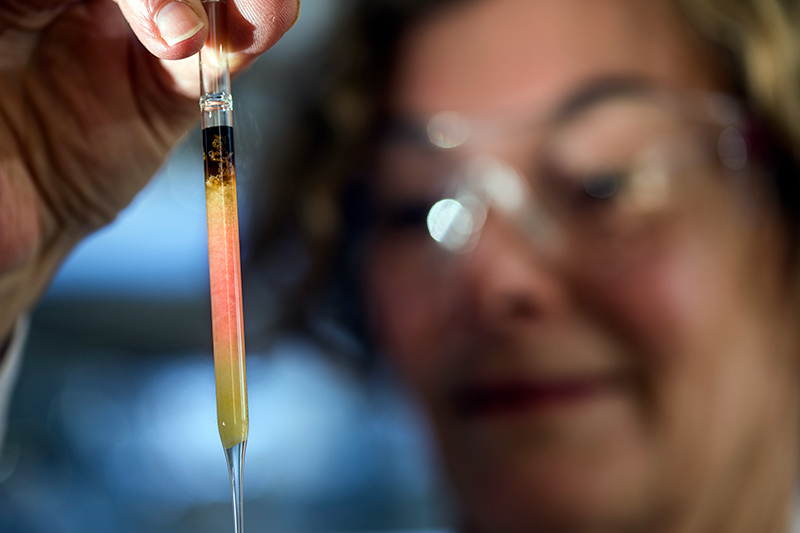
Scientists from The Australian National University (ANU) and overseas have discovered the world's oldest colors: 1.1 billion-year-old bright pink pigments extracted from rocks deep beneath the Sahara desert in Africa.
Dr Nur Gueneli from ANU said the pigments taken from marine black shales of the Taoudeni Basin in Mauritania, West Africa, were more than half a billion years older than previous pigment discoveries. Dr Gueneli discovered the molecules as part of her PhD studies.
"The bright pink pigments are the molecular fossils of chlorophyll that were produced by ancient photosynthetic organisms inhabiting an ancient ocean that has long since vanished," said Dr Gueneli from the ANU Research School of Earth Sciences.
The fossils range from blood red to deep purple in their concentrated form, and bright pink when diluted.
ANU led the research with support from Geoscience Australia and researchers in the United States and Japan. Australian National University (ANU) is a national research university located in Canberra, the capital of Australia. Its main campus in Acton encompasses seven teaching and research colleges, in addition to several national academies and institutes. Geoscience Australia is an agency of the Australian Government that carries out geoscientific research.
The researchers crushed the billion-year-old rocks to powder to reveal the world's oldest colors, before extracting and analysing molecules of ancient organisms from them.
"The precise analysis of the ancient pigments confirmed that tiny cyanobacteria dominated the base of the food chain in the oceans a billion years ago, which helps to explain why animals did not exist at the time," Dr Gueneli said.
Senior lead researcher Associate Professor Jochen Brocks from ANU said that the emergence of large, active organisms was likely to have been restrained by a limited supply of larger food particles, such as algae.
"Algae, although still microscopic, are a thousand times larger in volume than cyanobacteria, and are a much richer food source," said Dr Brocks from the ANU Research School of Earth Sciences. Algae is an informal term for a large, diverse group of photosynthetic organisms.
"The cyanobacterial oceans started to vanish about 650 million years ago, when algae began to rapidly spread to provide the burst of energy needed for the evolution of complex ecosystems, where large animals, including humans, could thrive on Earth."
Cyanobacteria are a phylum of bacteria that obtain their energy through photosynthesis, and are the only photosynthetic prokaryotes able to produce oxygen. The name "cyanobacteria" comes from the color of the bacteria (Greek: kyanós, lit. 'blue'). Cyanobacteria, which are prokaryotes, are also called "blue-green algae", though the term "algae" in modern usage is restricted to eukaryotes.
Porphyrins are a group of heterocyclic macrocycle organic compounds, composed of four modified pyrrole subunits interconnected at their α carbon atoms via methine bridges (=CH−). The parent porphyrin is porphine, a rare chemical compound of exclusively theoretical interest. Substituted porphines are called porphyrins. With a total of 26 π-electrons, of which 18 π-electrons form a planar, continuous cycle, the porphyrin ring structure is often described as aromatic. One result of the large conjugated system is that porphyrins typically absorb strongly in the visible region of the electromagnetic spectrum, i.e. they are deeply colored. The name "porphyrin" derives from the Greek word πορφύρα (porphyra), meaning purple.